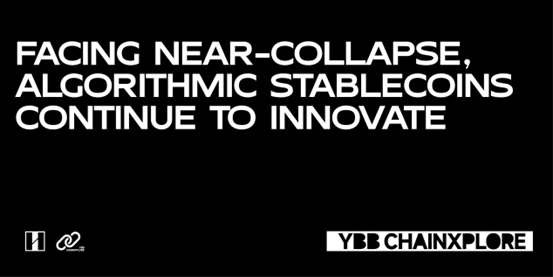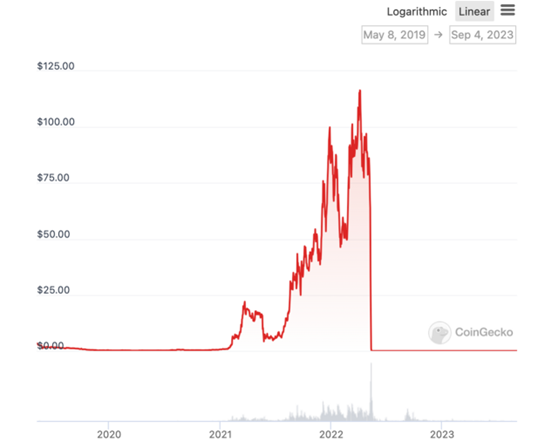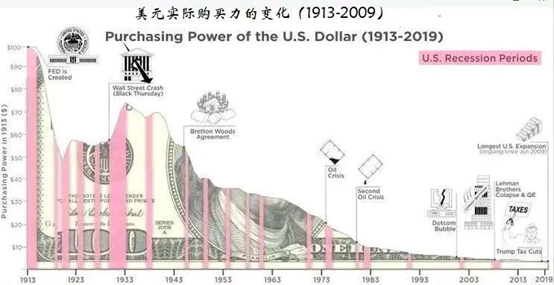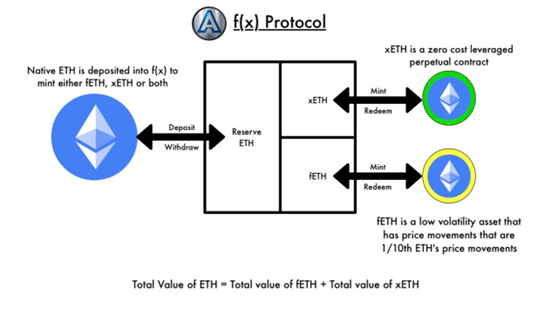YBB Capital: In a near-death situation, but still steady and has not stopped innovating
Author: Solaire, YBB Capital

Introduction
Stablecoins have always been a crucial part of the crypto world, accounting for 8.6% of the total market capitalization of the entire blockchain (approximately $124.5 billion). Centralized stablecoins, which are backed by USD and US Treasury bonds, have dominated the market, such as USDT and USDC. However, centralized stablecoins are always subject to central control; for instance, Tether has the ability to freeze USDT in any address, and their security is guaranteed by centralized entities. This clearly contradicts the original intention of blockchain. In the exploration of decentralized stablecoins, two main branches have emerged: over-collateralized stablecoins and algorithmic stablecoins. While over-collateralized stablecoins can maintain stability in the highly volatile crypto market due to their high collateralization rates, their minimum collateralization ratio of 1.5-2 times leads to inefficiencies in capital use. The market for algorithmic stablecoins has always been the harshest; although they have the highest capital efficiency, their near-zero collateral models are always accompanied by the risk of failure. After the collapse of LUNA, this track has been silent for a long time. However, I firmly believe that there should be a non-over-collateralized decentralized stablecoin in the crypto world, and this article will explore the history of algorithmic stablecoins and some new ideas.
What are Algorithmic Stablecoins?
Generally speaking, algorithmic stablecoins are a type of stablecoin that does not require any reserves or collateral, fully regulating their supply and circulation through algorithms. This algorithm controls the supply and demand of the currency, aiming to peg the price of the stablecoin to a reference currency (usually the US dollar). Typically, when the price rises, the algorithm issues more coins, and when the price falls, it buys back more coins from the market. This mechanism is similar to seigniorage, where central banks adjust the supply and value of currency by issuing or destroying money. For some algorithmic stablecoins, their functions can be modified based on community suggestions, and these modifications are achieved through decentralized governance, thus transferring the power of seigniorage to the users of the currency rather than to the central bank.
In summary, compared to common stablecoins (such as USDT and USDC), algorithmic stablecoins differ in their decentralization; they do not require reserves and are independent. Since algorithmic stablecoins are currencies based on the intrinsic relationship between mathematics, monetary economics, and technology, they suggest a model that may be more advanced than centralized stablecoins.
A Brief History of Algorithmic Stablecoins
The early attempts that influenced later algorithmic stablecoins can be traced back to 2014, when economist Robert Sams proposed a model called "Seigniorage Shares," which maintained price stability by automatically adjusting the money supply. This idea was inspired to some extent by modern central bank monetary policies. Next, BitShares attempted to adopt a hybrid model, which, while primarily asset-collateralized, also included some algorithmic adjustment elements. This can be seen as an important step in the development of algorithmic stablecoins, although it was not a pure algorithmic stablecoin itself.
By 2017, a project called Basis (originally named Basecoin) gained widespread attention. This project attempted to maintain the value of the stablecoin through a complex three-token system. However, due to incompatibility with U.S. securities laws, the project was ultimately forced to shut down at the end of 2018.
In 2019, Ampleforth proposed a new model called "elastic supply," which not only adjusted the issuance of new tokens but also adjusted the number of existing tokens in users' wallets to achieve price stability. Almost simultaneously, Terra also released its stablecoin, which used a composite model that included taxes, algorithmic adjustments, and asset collateralization, through its native token for minting. Of course, this token is also well-known, later referred to as LUNA.
Terra LUNA
LUNA is the most representative project among algorithmic stablecoins and is also one of the most infamous projects in the crypto world. Its history is like a flashbang, bright for a moment but disappearing just as quickly. Today's discussion of LUNA is merely to learn from history and discover some insights for the future.

LUNA historical Kline (data source:CoinGecko)
Terra is a blockchain built on the Cosmos SDK and Tendermint consensus, initially aimed at solving e-commerce payment issues through cryptocurrency. However, traditional cryptocurrencies are too volatile to be used like fiat currencies, and centralized stablecoins like USDT have regional and centralization issues. Therefore, Terra aimed to create a rich and decentralized stablecoin portfolio, including the Korean won, Thai baht, and US dollar.
To achieve this goal, Terra needed to launch a universal minting mechanism. Soon after, on a day in April 2019, a minting method was proposed by Terra's two co-founders, Do Kwon and Daniel Shin, in the Terra Money white paper, which involved minting stablecoins of various countries using LUNA (Terra's native token). Taking UST (Terra's USD stablecoin) as an example, let me briefly explain this method.
- First, UST is pegged to the US dollar at a 1:1 ratio;
- If UST exceeds the peg price, you can convert 1 dollar's worth of LUNA into 1 UST, at which point UST's value exceeds 1 dollar, allowing you to profit from selling;
- Conversely, if UST is below the peg price, you can always exchange 1 UST for 1 dollar's worth of LUNA.
This model was met with skepticism from the start. From the birth of LUNA until just before its collapse, many well-known figures in the crypto community warned that LUNA was nothing more than a Ponzi scheme. Yet, despite this, many people continued to flock to this dangerous territory. So why is that?
Seigniorage
To understand a Ponzi scheme, one must first understand the motivation behind its design. The widespread adoption of UST not only aimed to increase the price of LUNA but also had a crucial incentive point—seigniorage.
Seigniorage is an economic concept that describes the revenue obtained by governments through the issuance of currency. Specifically, this term typically refers to the difference between the face value of currency and its production cost. For example, if the cost of producing a one-dollar coin is 50 cents, then the seigniorage is 50 cents.
In the crypto world, all three types of stablecoins have seigniorage. For fiat-backed stablecoins, a seigniorage of about 0.1% is generally charged during the minting and burning process. Over-collateralized stablecoins earn revenue from transaction fees and interest paid by holders. As for algorithmic stablecoins, they have the highest seigniorage rates. By introducing a mechanism that ties to the volatility of pegged tokens, stablecoins can convert all funds entering the system into seigniorage, which is akin to creating money out of thin air. This mechanism significantly reduces startup costs and somewhat increases the anchoring rate, but it also comes with inherent fragility.
Anchor Protocol
LUNA was a miracle in the history of algorithmic stablecoins. Prior to it, algorithmic stablecoin projects had declared failure in a very short time or had never been able to scale. LUNA not only achieved the third position in the stablecoin sector but was also one of the few companies to integrate payment services.
Before its collapse, Terra actually had an excellent financial ecosystem and two payment systems built on the Terra protocol, CHAI and MemaPay. CHAI had even seamlessly integrated local payment channels in South Korea and had partnerships with numerous companies, including NIKE Korea and Philips. Within Terra's financial ecosystem, protocols for stocks, insurance, and asset splitting were also active. In fact, Terra had been quite successful in bringing the convenience of blockchain into the real world.
Unfortunately, this prosperity was built on Do Kwon's scheme. Rather than steadily advancing various application scenarios for UST, Do Kwon pressed the accelerator button on the Anchor Protocol, which accelerated both Terra's success and its demise.
Anchor Protocol was a decentralized bank within the Terra ecosystem, offering a very attractive savings product with a 20% APY on UST deposits (the initial design was 3% APY, but Do Kwon insisted on 20%). In a reality where banks cannot even provide a 1% interest rate, UST offered a 20% APY. Thus, the large-scale minting of UST and the mysterious button for stabilizing sell pressure were found by Do Kwon.
To maintain this scheme, Do Kwon became increasingly frantic in the later stages of Terra, using refinancing and purchasing BTC to maintain UST's annualized returns (there was a proposal to lower the annualized return to 4%, but Do Kwon understood that massive sell pressure was a more terrifying issue) and the stability of UST. However, paper cannot hold fire forever. On the night when UST migrated from Curve 3Pool to DAI killing 4Pool, during the lowest liquidity period for UST, a carefully planned short attack directly caused UST to decouple, and the BTC, which served as a second layer of protection, could not maintain UST's fixed exchange rate but instead fed the short sellers. Thus, the giant empire of Terra collapsed in an instant.
Parallel Worlds
If there are other parallel worlds where Do Kwon was not blinded by greed and did not press that button, or if the attack did not occur on the night of UST's migration, could Terra have avoided the outcome of death? The answer is no. In the parallel world where UST was not attacked, UST would ultimately still die due to Ponzi dynamics, and even without Ponzi, UST would still die due to forced pegging. Pegging to another currency is inherently difficult, and even without encountering a short attack, it would still be vulnerable to many uncontrollable events.
Schwarzschild Radius
The Schwarzschild radius is a physical parameter of celestial bodies, indicating that any celestial body smaller than its Schwarzschild radius will inevitably collapse into a black hole.
In fact, this principle applies not only to celestial bodies but also to algorithmic stablecoins like LUNA, and even to centralized stablecoins that adopt a "gold standard." Since LUNA and UST are inextricably linked, either one serves as the Schwarzschild radius for the other. Once UST decouples or LUNA experiences liquidity issues while the minting mechanism continues to operate normally, they will ultimately collapse into a "black hole."
For centralized stablecoins backed by USD or US Treasury bonds, their Schwarzschild radius can be considered the security of centralized entities. This centralization issue includes not only the entities themselves but also banks and custodians. While we all understand that both USDT and USDC have survived numerous FUDs over the years, their history is relatively long only in the context of the crypto world. No one can guarantee that any centralized institution is too big to fail. After all, Lehman Brothers also went bankrupt, and once there is a loss of collateral or an inability to redeem back to USD (USDC almost faced such a crisis in March of this year), they could instantly be drained into a "black hole."
Looking back at the history of currency in the real world, these mechanisms have indeed experienced collapses into black holes. For example, the collapse of the gold standard was due to imbalances in gold reserves during wartime and the massive printing of money by central banks, where the gold reserves could not match the total amount of printed money, leaving civilians unaware of how much gold reserves banks actually had. Only when a bank run occurred did everyone realize that the cash in hand was worthless, and ultimately, the excessive printing of money by central banks became a legitimate practice (the modern paper currency system). The situation of pegging one currency to another, such as the British pound indirectly pegged to the German mark, saw the UK briefly participate in the European Exchange Rate Mechanism (ERM), a semi-fixed exchange rate system among multiple currencies. In the ERM, the exchange rates of participating countries fluctuated within a relatively narrow range, with the German mark often serving as an "anchor" currency. This can be seen as an indirect peg. However, due to various factors (including interest rate increases caused by German reunification and domestic economic pressures in the UK requiring a rate cut to stimulate exports), maintaining a fixed exchange rate within the ERM became increasingly unsustainable.
The infamous Black Wednesday incident in history occurred at this moment when Soros discovered the vulnerabilities in this system. He, along with some hedge funds and multinational corporations engaged in arbitrage, short-sold weak European currencies in the market, forcing these countries to spend vast sums to stabilize their currency values.
On September 15, 1992, Soros decided to heavily short the pound, causing the pound to fall to a rate of 2.8 against the mark. At this point, the pound was on the verge of exiting the EMR system. By the 16th, even though the UK Chancellor raised the domestic interest rate to 15% in one day, it still had little effect. In this war to defend the pound, the UK government used $26.9 billion of its foreign exchange reserves, with the central bank buying back £2 billion per hour, yet still could not maintain the exchange rate above the minimum of 2.778. Ultimately, they suffered a crushing defeat and were forced to exit the EMR system. Soros made nearly $1 billion in profit from this battle, becoming famous overnight. The method of shorting LUNA was almost identical.
Credit Money
The modern monetary system is built on the credit of centralized governments. The money we hold is essentially a debt of banks or governments, and government bonds are debts of debts. Modern currency is essentially "credit money." The continuous issuance of debt by the government only leads to the devaluation of currency and accelerates the cycle of inflation. This monetary system may be the largest Ponzi scheme in human history, but when it comes to "money," most people do not think of anything beyond fiat currency. This is because people have accepted this Schelling point; if a scheme lasts long enough, it becomes "real." If we want to establish a stablecoin on the blockchain, we may have to accept a certain degree of Ponzi dynamics.

Changes in the purchasing power of the dollar (source: Tencent News)
Reflection
Regarding how to establish a currency on the blockchain, my personal views are as follows:
- Low volatility but allows for fluctuations, with sufficient liquidity;
- Not forcibly pegged to any fiat currency;
- Adjusted based on supply and demand indicators;
- Accept a certain degree of Ponzi dynamics, allowing this currency to become a Schelling point;
- A sufficient number of application scenarios that can facilitate real-world payments.
Floating Stablecoin, f(x) Protocol
f(x) is a tiered leverage protocol for ETH, aimed at meeting the demand for stable assets in the cryptocurrency space while alleviating centralization risks and capital efficiency issues. The f(x) protocol introduces a new concept called "floating stablecoin" or fETH. fETH is not pegged to a fixed value but gains or loses a small portion of the price movement of native Ethereum (ETH). Additionally, a supplementary asset called xETH is created, which acts as a zero-cost leveraged long ETH position. xETH absorbs most of the price fluctuations of ETH, thereby stabilizing the value of fETH.

Source:f(x) official X
- fETH: A low-volatility ETH asset, with its price fluctuating at 1/10 of the native ETH price (β coefficient of 0.1). For example, if today's ETH price is $1650, the minted fETH is 1650, and the price is also $1650. If tomorrow the ETH price drops to $1485, the price of fETH can still maintain at $1633.5, and vice versa. You can also simply understand it as 90% stablecoin + 10% ETH;
- xETH: A zero-cost leveraged long ETH position used to absorb ETH's volatility to stabilize the price of fETH (i.e., β > 1), and these xETH can be traded in DeFi (supported by the demand for long positions in ETH).
Under this mechanism, the β coefficient can be adjusted.
β
In finance, beta (Beta) is a measure used to quantify the volatility of an asset or portfolio relative to the overall market. It is a key parameter in the Capital Asset Pricing Model (CAPM) used to estimate the expected return and risk of an asset.
Calculation Method
Beta is calculated through regression analysis, typically comparing the returns of individual assets with the overall market (usually represented by a market index like the S&P 500). Mathematically, beta is the slope in the following regression equation:
Asset Return = α + β × Market Return
Where α is the intercept, representing the expected return of the asset in a risk-free scenario, and β is the slope, indicating the sensitivity of the asset to market returns.
Explanation
- β = 1: The asset's volatility is consistent with the overall market's volatility;
- β > 1: The asset is more volatile relative to the market, meaning it may experience larger fluctuations when the market rises or falls;
- β < 1: The asset is relatively stable compared to the market, with lower volatility;
- β = 0: The asset has no correlation with market returns, typically a risk-free asset like government bonds;
- β < 0: The asset is negatively correlated with market returns, meaning it may yield positive returns when the market declines, thus serving as a hedge.
How It Works
The f(x) protocol only accepts ETH as collateral and is supported by low and/or high volatility (β) tokens backed by that collateral. Providing ETH allows users to mint fETH and/or xETH, with the quantity based on the price of ETH and the current net asset value (NAV) of each token. Conversely, users can redeem the NAV of fETH or xETH for ETH from the reserves at any time.
The NAV of fETH and xETH changes with the price of ETH, so at any time, the total value of all fETH plus the total value of all xETH equals the total value of ETH reserves. In this way, each fETH and xETH token has its NAV support and can be redeemed at any time. Mathematically, the invariant holds at all times:

Where neth is the amount of ETH collateral, peth is the price of ETH in USD, nf is the total supply of ETH, pf is the NAV of ETH, nx is the total supply of xETH, and px is the NAV of xETH.
The protocol limits the volatility of fETH by adjusting its NAV according to changes in the price of ETH, allowing 10% of ETH returns (for βf = 0.1) to be reflected in the price of fETH. The protocol also adjusts the NAV of xETH to exceed the magnitude of ETH returns to satisfy the f(x) invariant (Equation 1). In this way, xETH provides leveraged ETH returns (tokenized, with zero financing costs), while fETH exhibits low volatility, and both maintain credible decentralization.
Risk Model
In fact, under this concept, fETH relies on the existence of xETH. If the demand for xETH is not large enough, it cannot maintain the 0.1 β coefficient, or if volatility is too high, it cannot be sustained. Therefore, the protocol introduces a CR formula to calculate the overall health level of the system.

CR is the total value of collateral divided by the total NAV of fETH, and four risk levels are set based on percentages.
If the system's CR falls to a level where the ability to maintain βf = 0.1 is at risk, the system's risk management system will initiate four progressively stronger modes to guide the system back toward over-collateralization. Each mode sets a CR threshold, and when the CR falls below that threshold, additional measures will be initiated to help maintain the stability of the entire system. As long as the CR is below its specified level, the incentives, fees, and controls described by each mode will remain effective. For example, if Level 3 is effective, it means that Level 1 and Level 2 are also effective. When the CR rises above the relevant level, they will automatically restore.
- Level 1------Stability Mode: When the CR value falls below 130%, the system enters stability mode. In this mode, minting of fETH is disabled, and redemption fees are set to zero. Redemption fees for xETH increase, and xETH miners receive additional rewards from fETH holders in the form of small stable fees;
- Level 2------User Rebalance Mode: When the CR value falls below 120%, the system enters user rebalance mode. In this mode, users can earn rewards by exchanging fETH for ETH, while remaining fETH holders pay stable fees in a manner similar to stability mode. In this way, users can earn slightly more than the NAV of fETH upon redemption. In this mode, the redemption fee for fETH is set to zero;
- Level 3------Agreement Balance Mode Again: When the CR value falls below 114%, the system enters protocol rebalance mode. This mode is similar to Level 2, except that the protocol itself can use reserves for rebalancing. This mode is unlikely to be triggered because the rebalancing actions of Level 2 are profitable, and users respond faster than the protocol, but it creates an additional layer of protection. In this mode, the protocol uses ETH from the fETH reserves to purchase on the market and then burns fETH from the AMM. Using this mechanism, the NAV of fETH will only decrease by the rebalancing stable fees obtained by the protocol in this case;
- Level 4------Recapitalization: In the most extreme cases, the protocol has the ability to issue governance tokens to raise ETH for capital restructuring by minting xETH or purchasing and redeeming fETH.
Conclusion
The f(x) Protocol proposes a method to create stablecoins by controlling volatility, which is an interesting idea, but it still has some obvious drawbacks, as fETH can only exist when the market is relatively stable and xETH is sufficiently adopted. However, this is indeed a very innovative idea. Attempting to establish a system similar to modern credit money on a decentralized basis is bound to fail (success is only possible under centralization). Therefore, we need to focus on having a sufficient number of application scenarios and ensuring low volatility with liquidity. I personally believe that some meme tokens (like Dogecoin) have the potential to develop application scenarios, and new attempts at algorithmic stability are not limited to just f(x). For something in its nascent stage, we should allow a certain degree of patience and tolerance.
References
f(x) White Paper
Terra Money: Stability and Adoption
The Denationalization of Money
The Ring Dream of Algorithmic Stablecoins: After LUNA, There Will Be No Next UST
















